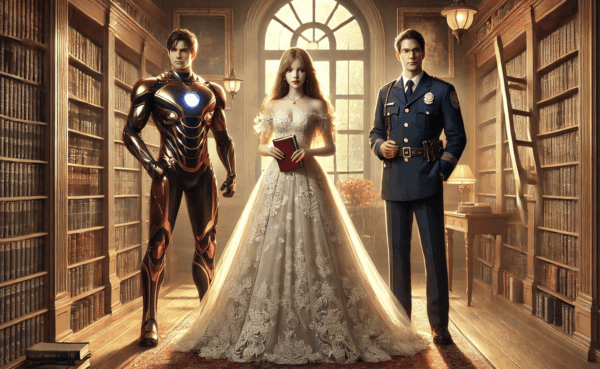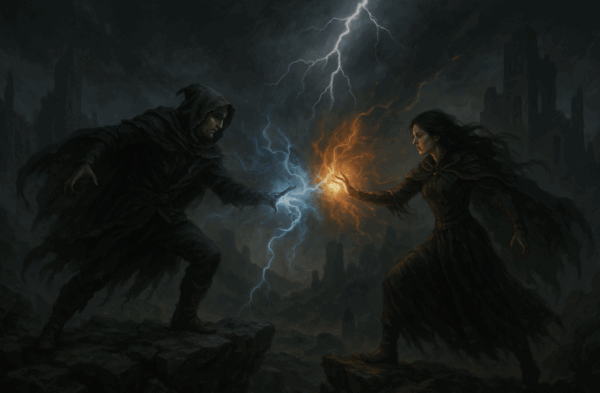Imagine you’re at a party, and someone walks up to you and says, “Tell me about your favorite book in 30 seconds. Go!” Suddenly, your mind races—do you give a play-by-play of every character’s backstory or just nail the twist ending? That’s essentially what a synopsis is: a whirlwind, fast-paced introduction to your story. A good one should captivate and inform, but it doesn’t have the luxury of taking its sweet time.
Now, let’s get down to the nitty-gritty. What is the meaning of synopsis? In simplest terms, a synopsis is a brief summary of a larger work—whether it’s a book, film, or screenplay. It’s the “elevator pitch” of your story, designed to hook your audience in just a few short paragraphs. But, much like a first date, a synopsis has one job: to make a lasting impression. It’s about distilling your plot, characters, and conflict into something concise yet compelling. The synopsis meaning doesn’t just involve listing what happens; it’s about making sure your reader understands why they should care.
Understanding how to craft a strong synopsis is essential, whether you’re submitting your manuscript to a literary agent, prepping a pitch for a movie, or simply trying to describe your latest literary obsession. A great synopsis can be the difference between someone eagerly picking up your self-published book, or walking away, bored. So, let’s dive in and explore how you can create a synopsis that doesn’t just summarize but entices.
The ‘Meaning of Synopsis’—Decoded Without the Jargon
Let’s get straight to the point: the meaning of synopsis is simple. It’s a concise summary that captures the essence of a larger work—whether it’s a book, movie, or play. Think of it as the CliffsNotes version of your story, minus the deep analysis. In other words, it’s your story in a nutshell—without all the fluff.
Now, when we talk about a brief synopsis meaning, we’re referring to the fact that brevity is key. A synopsis doesn’t need to get bogged down with every twist and turn—just the essentials. It’s a snapshot of your plot, your main characters, and the conflict that drives the narrative forward. Keep it short and sweet, but make sure it hits all the important beats. And no, it’s not a last-minute essay blurb that you write in 15 minutes the night before it’s due!
A synopsis is different from other types of summaries, like a plot summary or an abstract. Unlike a plot summary that may dive deep into events, a synopsis should highlight the core elements—what’s at stake, who’s involved, and what makes the story worth reading. Simply put, it’s the hook, not the entire reel.
Short but Mighty: Why a Brief Synopsis Packs a Punch
In publishing and media, a brief synopsis is your chance to make a big impact in a small space. Whether you’re submitting your manuscript to an agent or pitching a movie idea, a brief synopsis aims to get straight to the point and grab attention fast. In most cases, this means you’re working with a word count ranging from 150 to 300 words. But don’t let that limit fool you—a brief synopsis isn’t just about being short; it’s about being effective. It needs to hook the reader while offering enough detail to make them want more.
The tone of the synopsis of a book should match the target audience. If you’re writing for an agent, you’ll want a professional, polished feel. If you’re pitching a blockbuster movie, it might be punchier and more dramatic. But no matter what, clarity is key. Your readers should know exactly what’s at stake and why they should care about your story.
Take, for example, the synopsis for The Hunger Games: “In a dystopian future, a girl must fight to the death in a televised competition that pits her against the world’s most ruthless teenagers.” It’s concise, it’s thrilling, and it tells you exactly what the story is about.
Or Jaws: “A small town is terrorized by a massive shark, and it’s up to a local sheriff, a marine biologist, and a fisherman to stop it.” A brief but powerful punch, right?
Plot Synopses vs. Story Synopses: A Showdown
When it comes to writing a synopsis, there’s a showdown between two heavyweights: the plot synopsis and the story synopsis. Both are essential, but they serve different purposes. Think of the plot synopsis as the skeleton and the story synopsis as the soul. One outlines the events that drive the narrative forward, while the other focuses on the emotional arc and character growth.
A plot synopsis is all about the what: What happens, who does it, and how they get from point A to point B. It’s event-driven and aims to cover the major moments without diving deep into feelings. For example, a plot synopsis for The Lion King might look like this: “A young lion prince, Simba, is exiled after his father’s death. He returns to reclaim his kingdom from his evil uncle, Scar.”
On the other hand, a story synopsis zooms in on the emotional journey of the characters. It’s less concerned with what happens and more with why it matters to the characters involved. A story synopsis for the same movie might read: “Simba’s journey from guilt-ridden exile to confident leader mirrors his emotional growth, as he learns to accept his past and embrace his true destiny.”
While the plot synopsis focuses on the events, the story synopsis dives deeper into the character-driven journey. Both are vital, but knowing when to use each can elevate your synopsis game!
Anatomy of a Page-Turner: What to Include in a Strong Synopsis
Writing a strong synopsis isn’t just about summarizing events—it’s about creating intrigue and excitement in a few short paragraphs. A great synopsis should include four essential elements: the protagonist, the conflict, the stakes, and the resolution. Think of these as the building blocks that transform a dry summary into a page-turner.
- First, introduce your protagonist—this is who the story is all about. Your reader needs to know who they’re rooting for. Are they an underdog? A hero with flaws? Make sure they’re relatable and interesting right from the start. For example, in the synopsis of Harry Potter and the Sorcerer’s Stone, the protagonist, Harry, is introduced as an orphaned boy who discovers he’s a wizard. Instantly, we want to know more.
- Next, highlight the conflict—this is the central problem that drives the story forward. Conflict is what keeps your protagonist moving, and it’s what will engage your reader. In The Hunger Games, the conflict is Katniss being forced to fight for her life in a deadly, televised competition. It’s high-stakes and terrifying—we feel it.
- Then, the stakes—what’s at risk? Without stakes, there’s no urgency. Will your protagonist lose everything or perhaps the world itself? In The Lord of the Rings, the stakes couldn’t be higher: the fate of Middle-earth hangs in the balance.
- Finally, the resolution—give your readers a glimpse of how things come to a head. This doesn’t mean you need to reveal everything (no spoilers, please!), but hinting at how the conflict might be resolved or how the protagonist changes is essential. A strong resolution leaves readers wanting more, not just closure.
Structure-wise, aim for a clear beginning, middle, and end, but with that added spice. Keep it tight, but let the reader feel the emotional beats. After all, your synopsis should make someone want to take your book home and introduce it to their friends. When done right, your synopsis meaning will be clear: this story is unmissable.
Common Mistakes That Make Synopses Fall Flat (And How to Avoid Them)
Writing a synopsis can feel like walking a tightrope—too much detail and it’s a snooze fest, too little and it’s confusing. Here are some common pitfalls to avoid:
Overcomplication: Don’t make your reader’s head spin with convoluted language or unnecessary details. Remember, your job is to entice, not to overwhelm.
- Bad Example: “The protagonist, who has an inexplicable past involving cryptic and often cryptographically encrypted messages from an ancient society, must solve a puzzle that could alter the course of history.” Keep it simple!
- Improved Version: “A woman with a mysterious past must solve an ancient puzzle that could change the world forever.” Much clearer, right?
Vagueness: Leaving out important details in the hopes that your synopsis will remain “mysterious” is a rookie mistake. You can’t hook a reader if they don’t know what the story is about.
- Bad Example: “A hero embarks on a journey.” That tells us… nothing.
- Improved Version: “A young hero must save their city from an ancient curse before it’s destroyed.” Now, that’s intriguing.
Spoilers: While you want to give enough info to draw the reader in, you don’t need to spoil the entire plot. Nobody wants to know the ending in the first paragraph.
- Bad Example: “After years of struggle, the protagonist finally solves the mystery—and dies in the process.” Yikes—that’s a no-go.
- Improved Version: “The protagonist uncovers the truth about a decades-old mystery, but the consequences are deadly.” This keeps the intrigue without giving it all away.
Monotone Delivery: A flat, lifeless tone will instantly make your synopsis as appealing as a soggy towel. Inject some energy and urgency into your writing.
- Bad Example: “The protagonist has a difficult task.”
- Improved Version: “The protagonist faces an impossible task that could cost them everything.”
Clarity and intrigue are your best friends. Keep your brief synopsis exciting and clear, and you’ll have a winner every time. Another way to avoid making these kind of mistakes, is to look into working with a writing coach. They’ll help you through the process of writing and help with the editing!
One Size Doesn’t Fit All: Different Synopses for Different Goals
Not all synopses are created equal. Depending on your goal, the meaning of synopsis can vary, and the approach you take should change accordingly. Whether you’re submitting to an agent, entering a writing contest, or crafting a back-of-book blurb, each type requires a unique tone and focus.
Synopsis for Agents
For literary agents accepting submissions, your synopsis should be professional, concise, and reflective of the story’s depth. You’ll want to highlight the major plot points, the stakes, and character motivations, all while keeping the tone serious and polished. Think of this as your “business proposal” for your story. Example: “When a ruthless corporation threatens to destroy her hometown, Jane must risk everything to uncover the truth and save the ones she loves.”
Synopsis for Contests
For contests, the tone can be slightly more creative and engaging. Here, you can take a few more liberties in presenting the emotional journey or thematic elements that make your story stand out. This version is still clear but may lean into the why of your story rather than just the what. Example: “A small-town artist must discover the power of her own voice in a world that refuses to listen.”
Back-of-Book Synopsis
When writing a back-of-book blurb, think book advertising. This is where you hook the reader and get them to buy the book. The language should be snappy, intriguing, and designed to spark curiosity, but without giving too much away. For example: “A deadly game. A group of strangers. Only one will survive. Welcome to the ultimate test of survival.”
So, while the synopsis meaning stays the same—summarizing your story—the tone, content, and goal should adapt to fit your specific audience. Tailor it wisely, and you’ll have a synopsis that works for whatever purpose you’re aiming for!
Pro Tips to Make Your Synopsis Irresistible
To make your synopsis stand out, focus on using active voice and compelling verbs. Rather than saying, “The hero was faced with danger,” make it punchier: “The hero faces danger head-on.” Active voice drives momentum and keeps things engaging.
Clear character arcs are key. Readers need to know who your protagonist is at the start, where they end up, and how they grow in between. A strong arc makes your story feel dynamic and complete.
Don’t forget to end with flair—leave your reader wanting more. Tease the emotional or narrative payoff without giving everything away. Think of it as a cliffhanger that draws them in.
For quick reference, here’s a power-up checklist for your synopsis:
- Use active voice and vivid verbs
- Focus on character transformation
- Keep it concise but impactful
- End with a tease, not a resolution
Remember, whether you’re crafting a synopsis or an outline, your goal is the same: to make it irresistible! Keep it clear, compelling, and just mysterious enough to spark curiosity.
Final Word: Your Story Deserves a Synopsis That Sings
A great synopsis is more than just a summary—it’s an art and a craft. It’s the first glimpse of your story, the hook that can make someone fall in love with your world in seconds. While writing a synopsis can feel like a daunting task, remember it’s your chance to showcase the heart of your story with creativity and flair. Take the time to craft something that reflects the emotional core, stakes, and excitement of your narrative. Your synopsis meaning is simple: it’s the spark that ignites curiosity and draws readers in. So, make it sing, and let your story shine!
Ready to perfect your synopsis? Dive deeper into the art of storytelling with a writing coach and take your writing to the next level!
FAQs – Synopsis Meaning
Q1: How should a synopsis start?
A synopsis should start by introducing the protagonist and their goal or conflict. Capture the reader’s attention right away by setting the stage for the story. Begin with a compelling sentence that outlines who the main character is and what’s at stake. For example, “In a world where the dead can be resurrected, a young woman must choose between saving her family and protecting her heart.”
Q2: How long is a synopsis supposed to be?
The length of a synopsis can vary depending on the context, but generally, it should be between 150 to 300 words. If you’re submitting to an agent or publisher, check their specific guidelines. For a brief synopsis, around 150 words is typical, while a more detailed synopsis might go up to 300 words or slightly more.
Q3: What is a synopsis vs. summary?
A synopsis is a short, concise version of your story that highlights key plot points, characters, and the central conflict. It’s often used in professional settings like submissions to agents or publishers. A summary, on the other hand, can be broader and is typically less focused on making the reader excited. A summary might cover a wider range of details and offer less urgency than a well-crafted synopsis.
Q4: Does a synopsis tell the whole story?
Yes, a synopsis generally covers the whole story but without all the details. It should include the key plot points, the central conflict, character motivations, and how things are resolved. However, while it should outline the beginning, middle, and end, it doesn’t need to give every minor detail or spoil all the twists and turns.
Q5: Does a synopsis have to be chronological?
Not necessarily. While many synopses are written in chronological order to maintain clarity, there’s room for creativity. You can rearrange the sequence to emphasize the emotional arc, key conflicts, or any central moments, as long as it remains clear and coherent. Just make sure your synopsis is still easy to follow!
Q6: Can a synopsis be one sentence?
Technically, yes, but only if it’s the logline or a very brief synopsis. A one-sentence synopsis is usually meant to be a concise pitch of the core idea or hook of the story. For example: “A washed-up boxer trains a young prodigy to fight the match of his life.” However, for a full synopsis, you’ll need more than one sentence to convey the plot and key details.








